Step2: LK100EW / LK300EW to Share USB Device Over Network User Guide (on Mac)
This document provides a detailed guide on how to use the Virtual USB Tool to enable USB device connectivity over the network for LK100EW and LK300EW print server models.
Principle Explanation
Connecting a Printer or Scanner
This solution is applicable to all printers and scanners.
Some printers, such as Canon’s LBP series (which use the CAPT language) and certain Ricoh models (which use the DDST language), do not support Windows’ built-in TCP/IP protocol for shared printing. To enable multiple computers to share these printers, virtual USB Connect Tool is required.
You can think of the virtual USB connection tool as simulating the plugging and unplugging of the printer’s USB cable via software. When connected, it functions as if the printer is directly connected to your computer, eliminating the need for any physical intervention.
Connecting Other USB Devices
The virtual USB connection tool can also be used for other USB devices. It simulates the plugging and unplugging of the device’s USB cable through software. When connected, it works just like the device is directly connected to your computer, without the need for physical interaction.
Due to the low-power design, it does not support high power-consuming device without an independent power supply.
Prerequisites
- Ensure the print server is configured on the network, the cloud indictor light is always on.
- Install the drivers for any USB devices you want to connect on your computer.
- Download and install the Virtual USB Connect Tool.
Steps to Use the Virtual USB Tool on Mac
Connecting a Printer or Scanner
(Important!) Before using the tool, ensure the printer or scanner driver is installed on your Mac. You can find the appropriate drivers on the official website of the printer or scanner brand.
- Run the “Virtual USB Client” software after installation.
- Right-click and select “Auto-Find USB Servers” to display the print servers available on your local network.
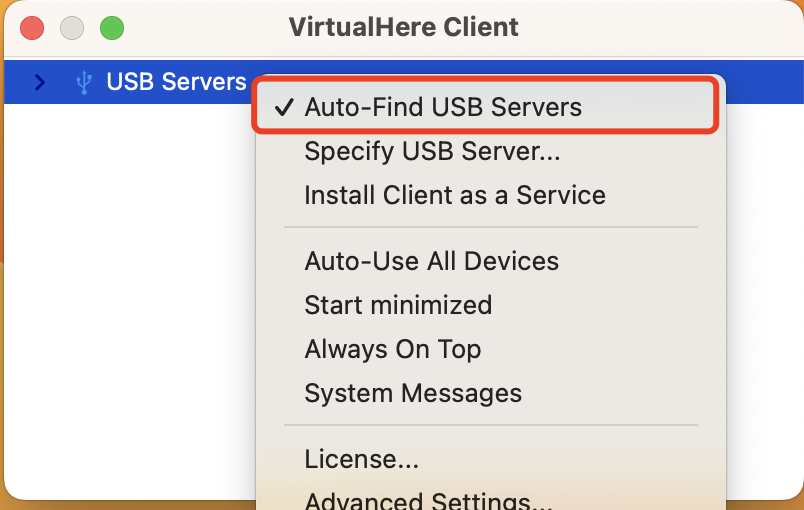
- Select the printer or scanner you wish to connect to. Right-click on the device and choose “Use this device”. This action simulates a virtual connection between your printer or scanner and the computer.

- Add the printer or scanner on your Mac by going to System Preferences > Printers & Scanners. Click Add Printer or Scanner, and you should see the connected device listed under Local Printers.
- In the Use box, select the corresponding driver. (If the driver is not found, it means the printer or scanner driver was not installed correctly. Please reinstall it.)
- Click Add.
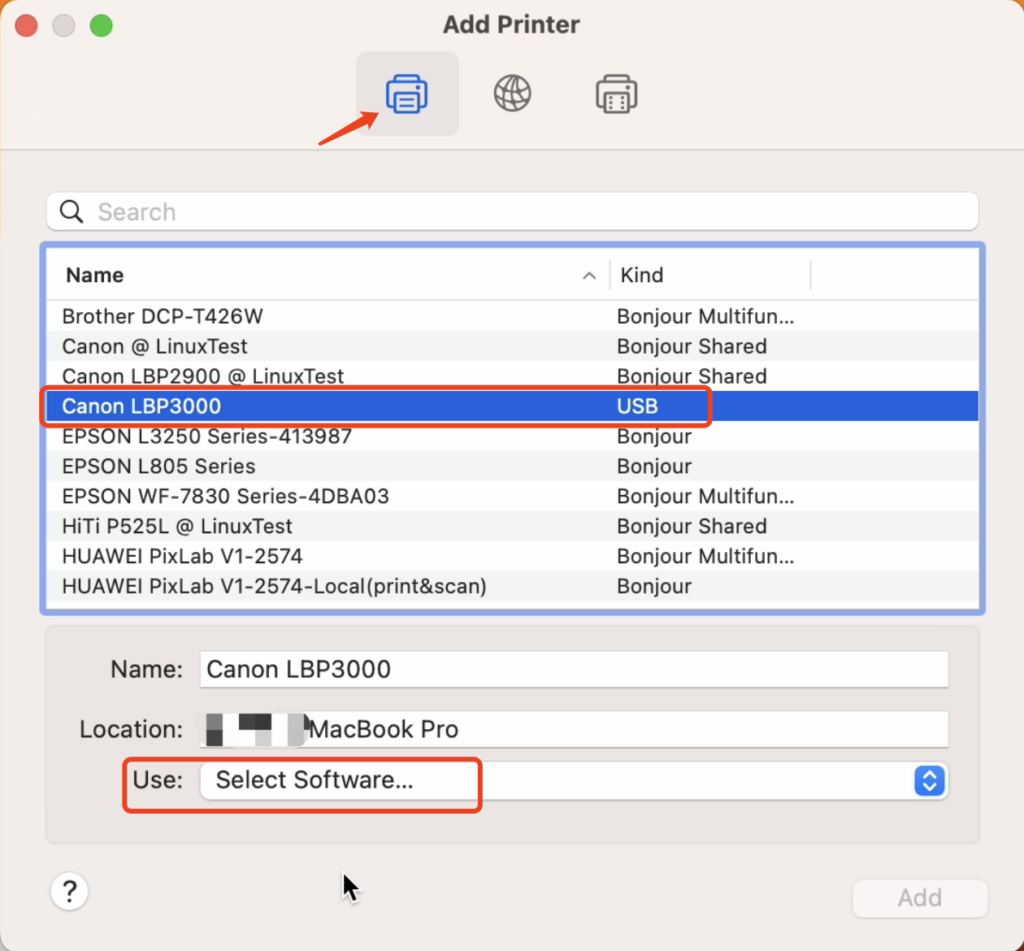
- After successful addition, the printer or scanner will appear in the printer list.
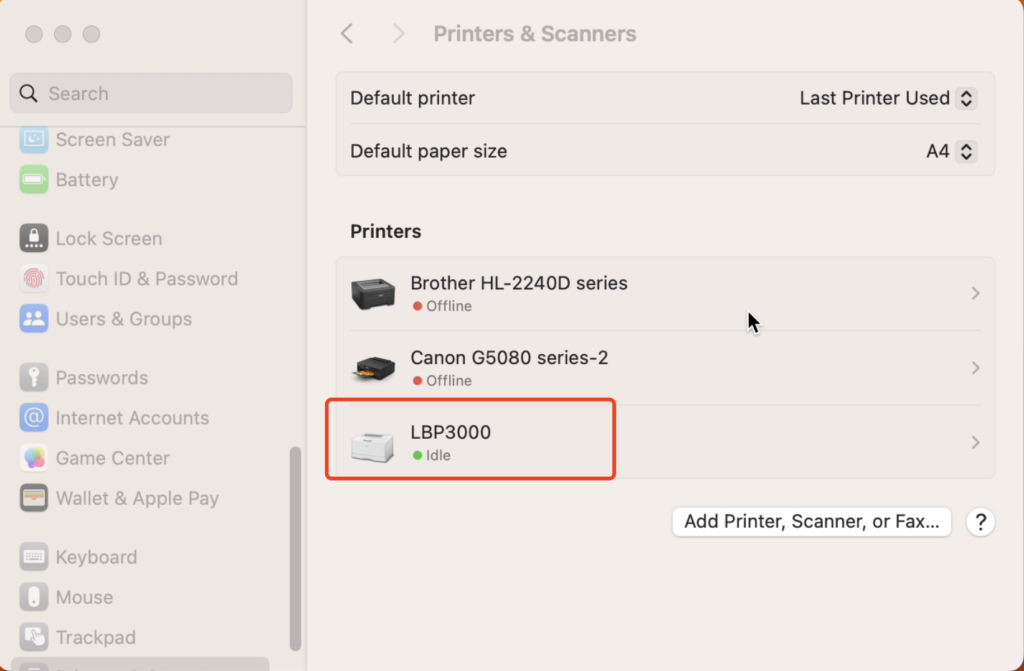
- When printing, simply choose the corresponding printer from the list.
- To disconnect, right-click on the software interface and choose “Stop USB this device”. The printer or scanner will show as Offline.
Connecting Other USB Devices
- Run the “Virtual USB Client” software after installation.
- Right-click and select “Auto-Find USB Servers” to display the USB servers available on your local network.

- Select the USB device you wish to connect to. Right-click on the device and choose “Use this device”. This action simulates a virtual connection between your printer or scanner and the computer.
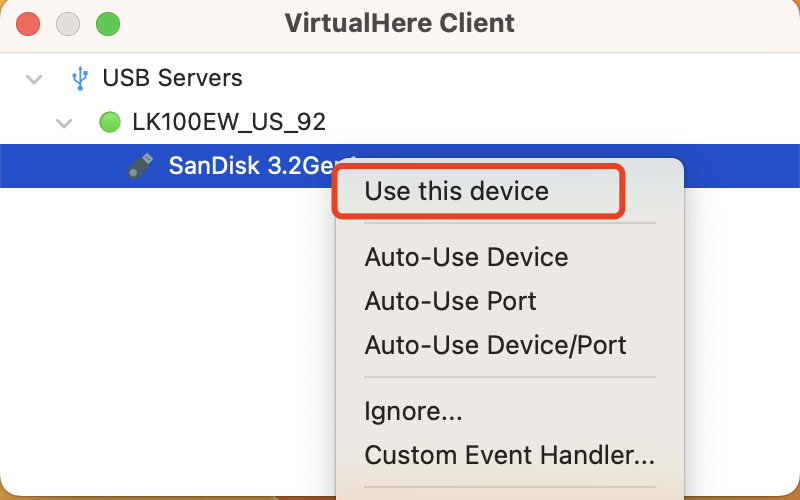
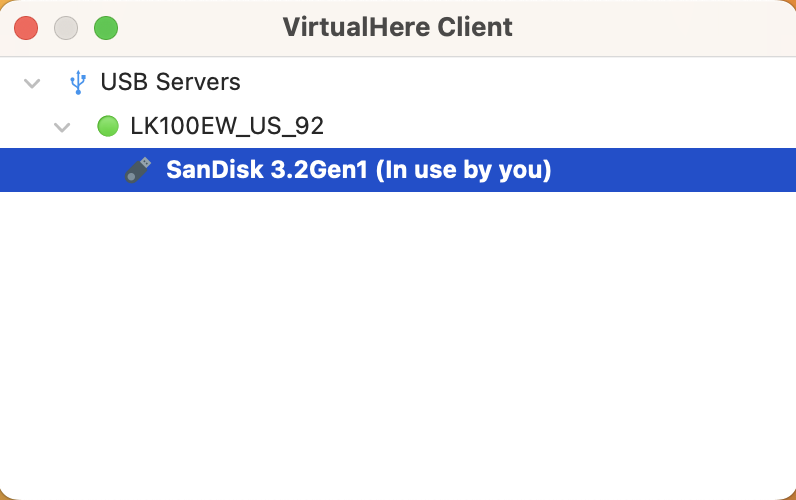
- To disconnect, right-click on the software interface and choose “Stop USB this device”.
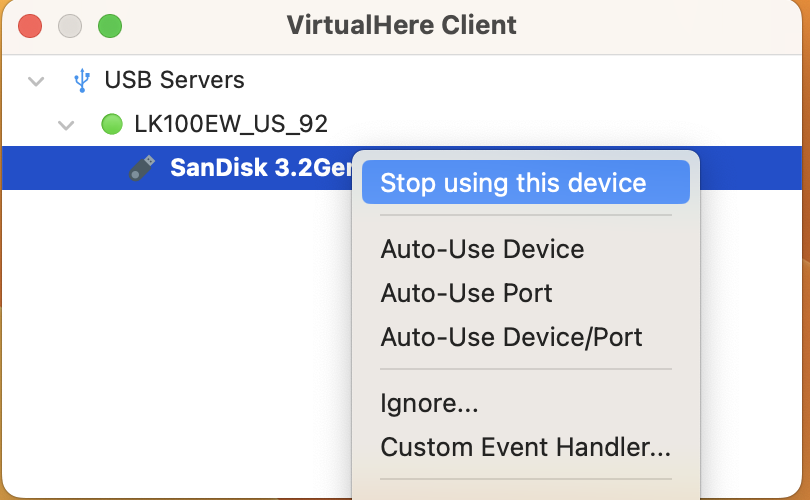
In the software list, select the USB device and right-click to connect. The status will change to “in use by you” once successful. After use, right-click and select “Stop using this device”.
